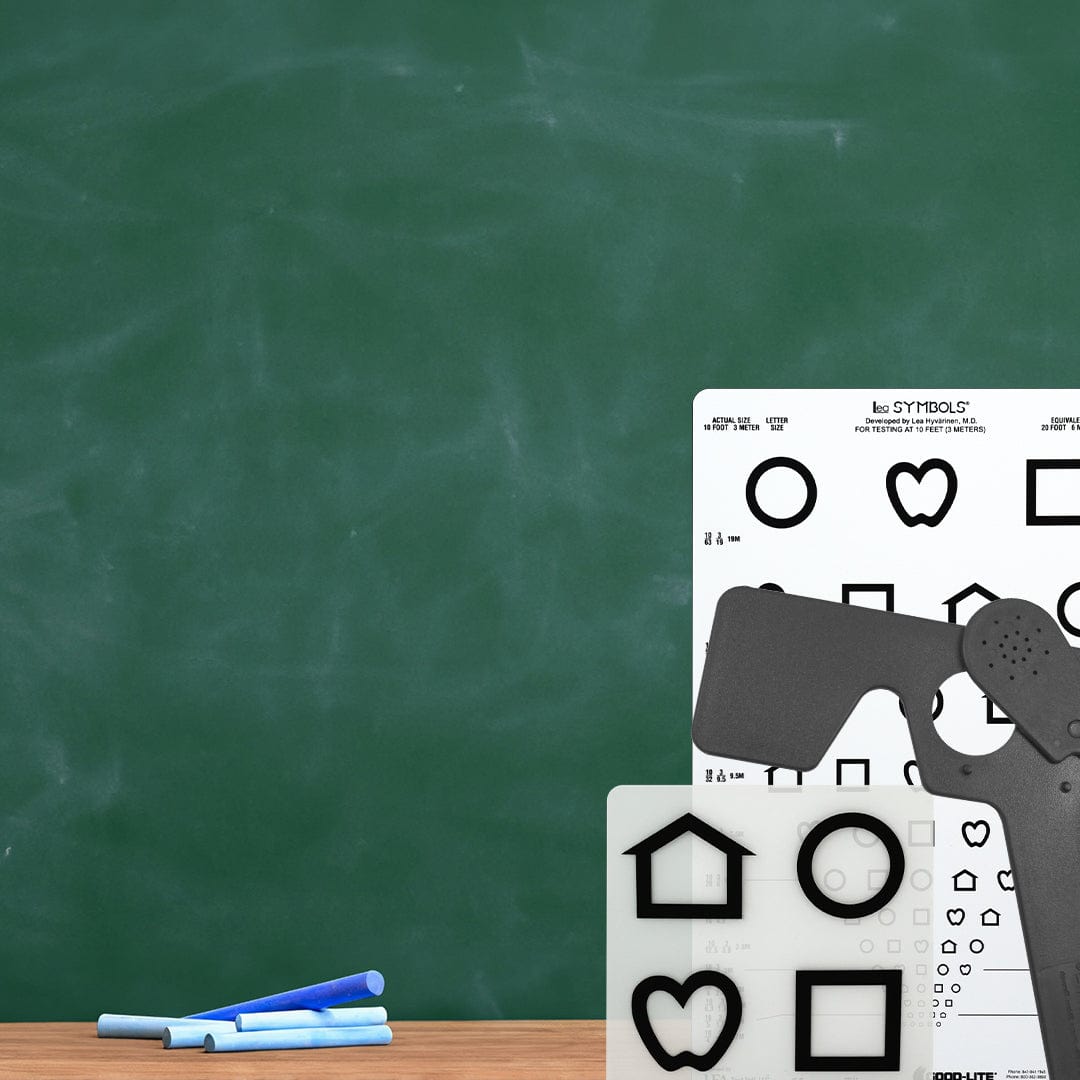



About
Bagolini Red Filter Bar consists of bar of optical filters of progressive density and provides a graduated system of dissociation. Useful to reinforce weak fusional status.
Suppression is not equally deep in all patients. To make a patient aware of the images perceived by the deviated eye, one must reduce the retinal illuminance in the fixating eye until the patient sees double. This is best done with a series of red filters of increasing density in the form of a ladder. The patient fixates a small light source, and the filters are placed in front of the fixating eye. Some patients see double with a light density filter; others require a heavier-density filter before they recognize their diplopia. The lighter the density of the filter needed to produce diplopia the more superficial is the suppression indicating an increased risk of diplopia. In individuals with normal fusion, placing graduated neutral-density filters in front of either eye will, at a certain density level, prevent fusion and induce two lights either together (orthophoria) or apart from each other (diplopia with heterophoria).
If one examines the visual field of a patient with heterophoria by placing a red filter in front of the habitually fixating eye while the patient is looking at a small light source, number of different responses can be elicited.
The patient may report that two lights are seen, a red one and a white one.
In esotropia the images appear in homonymous (uncrossed) diplopia, with the red light to the right of the white one when the red filter is in front of the right eye. In exotropia the images appear in heteronymous (crossed) diplopia, with the red light to the left of the white light when the red filter is in front of the right eye. This represents NRC.
The patient may report that only one pinkish light in the position of the white Fixation light is seen i.e. the red and white images appear to be superimposed. This is clearly an abnormal response in presence of heterophoria. This is termed Harmonious ARC.
The patient may report that two lights in uncrossed or crossed diplopia are seen, depending upon the direction of deviation but the measured distance between the double images proves to be smaller than expected from the magnitude of deviation. This represents unharmonious ARC.
Suppression is said to occur when the patient reports only a single light (usually the white light) but occasionally red depending upon the density of the red filter and the degree of the dominance of the fellow eye.Bar provides 16 levels of Bagolini filtering 23 mm square each. It uses the Bagolini red filter color. This unit was developed by Prof. Bagolini and Dr. Zanasi.
Bagolini Red Filter Bar yields excellent results for suppression detection.
Additional Resources
Bagolini Red Filter Bar consists of bar of optical filters of progressive density and provides a graduated system of dissociation. Useful to reinforce weak fusional status.
Suppression is not equally deep in all patients. To make a patient aware of the images perceived by the deviated eye, one must reduce the retinal illuminance in the fixating eye until the patient sees double. This is best done with a series of red filters of increasing density in the form of a ladder. The patient fixates a small light source, and the filters are placed in front of the fixating eye. Some patients see double with a light density filter; others require a heavier-density filter before they recognize their diplopia. The lighter the density of the filter needed to produce diplopia the more superficial is the suppression indicating an increased risk of diplopia. In individuals with normal fusion, placing graduated neutral-density filters in front of either eye will, at a certain density level, prevent fusion and induce two lights either together (orthophoria) or apart from each other (diplopia with heterophoria).
If one examines the visual field of a patient with heterophoria by placing a red filter in front of the habitually fixating eye while the patient is looking at a small light source, number of different responses can be elicited.
The patient may report that two lights are seen, a red one and a white one.
In esotropia the images appear in homonymous (uncrossed) diplopia, with the red light to the right of the white one when the red filter is in front of the right eye. In exotropia the images appear in heteronymous (crossed) diplopia, with the red light to the left of the white light when the red filter is in front of the right eye. This represents NRC.
The patient may report that only one pinkish light in the position of the white Fixation light is seen i.e. the red and white images appear to be superimposed. This is clearly an abnormal response in presence of heterophoria. This is termed Harmonious ARC.
The patient may report that two lights in uncrossed or crossed diplopia are seen, depending upon the direction of deviation but the measured distance between the double images proves to be smaller than expected from the magnitude of deviation. This represents unharmonious ARC.
Suppression is said to occur when the patient reports only a single light (usually the white light) but occasionally red depending upon the density of the red filter and the degree of the dominance of the fellow eye.Bar provides 16 levels of Bagolini filtering 23 mm square each. It uses the Bagolini red filter color. This unit was developed by Prof. Bagolini and Dr. Zanasi.
Bagolini Red Filter Bar yields excellent results for suppression detection.
Additional Resources
Bagolini: Fusional Status Red Filter Bar
- Regular price
- $641.50
- Sale price
- $641.50
- Regular price
-
$641.50
SKU: 566100






